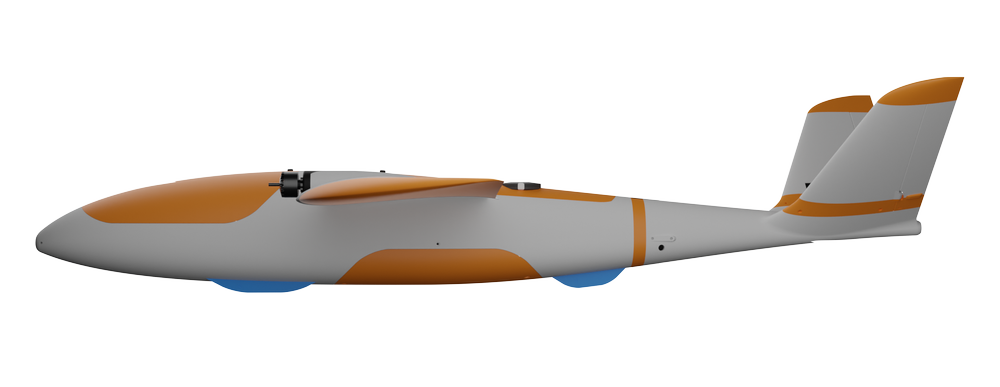
Titan Dynamics Blackbird drone. (Photo: Titan Dynamics)
Lithium-sulfur battery developer and manufacturer Lyten on Thursday said it is launching an initiative to bring its lightweight, domestically-sourced batteries to the drone industry.
Battery cells produced by Lyten were used to power a Titan Dynamics unmanned aircraft system (UAS) for more than three hours in a test that included various maneuvers and speeds up to 86 miles per hour, the California-based company said.
Toward the end of the second quarter, Lyten plans a new battery platform intended for longer endurance drone flights and broad commercial use, and also expects to conduct another flight test on Titan’s UAS lasting up to eight hours, the company said. That test will occur late in the second, or early third, quarter, Keith Norman, Lyten’s chief marketing officer, told Defense Daily in an email response to questions.
For the recent flight-test, Lyten’s battery cells were packaged into a pack by Upgrade Energy and flown on Titan’s 3D-printed Blackbird drone, which as a range of more than 300 miles, a payload capacity of nearly six pounds, and can be carried in Pelican cargo case.
Lyten said it is dedicating production capacity in its California manufacturing facilities to meet demand for its high-endurance drone propulsion batteries to meet defense applications.
The Lithium-sulfur batteries are free of nickel, cobalt, manganese, and graphite, materials the Lyten highlights are “dominated by Chinese supply chains.” Upgrade Energy integrated the battery cells in Los Angeles, where Titan also 3D-prints its drones.
“This creates a full, end-to-end, U.S.-sourced and manufactured drone, making it fully National Defense Authorization Act compliant and supply chain secure,” Norman said.
Lyten is also working to integrate its batteries into AEVEX Aerospace’s UAS, and the lithium-sulfur cells are slated to be demonstrated aboard the International Space Station following a launch later this year.
A version of this story originally appeared in affiliate publication Defense Daily.